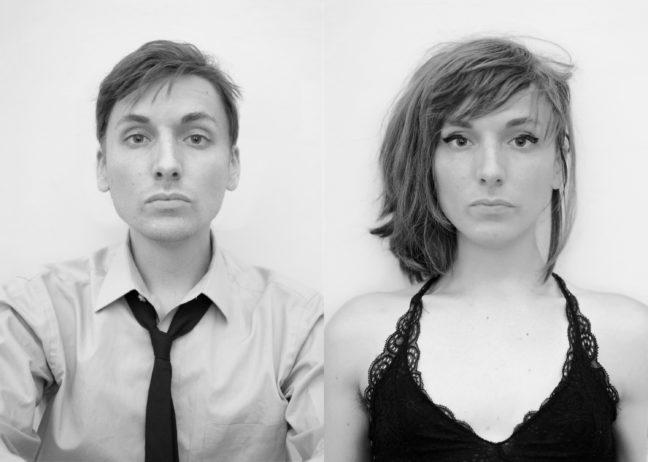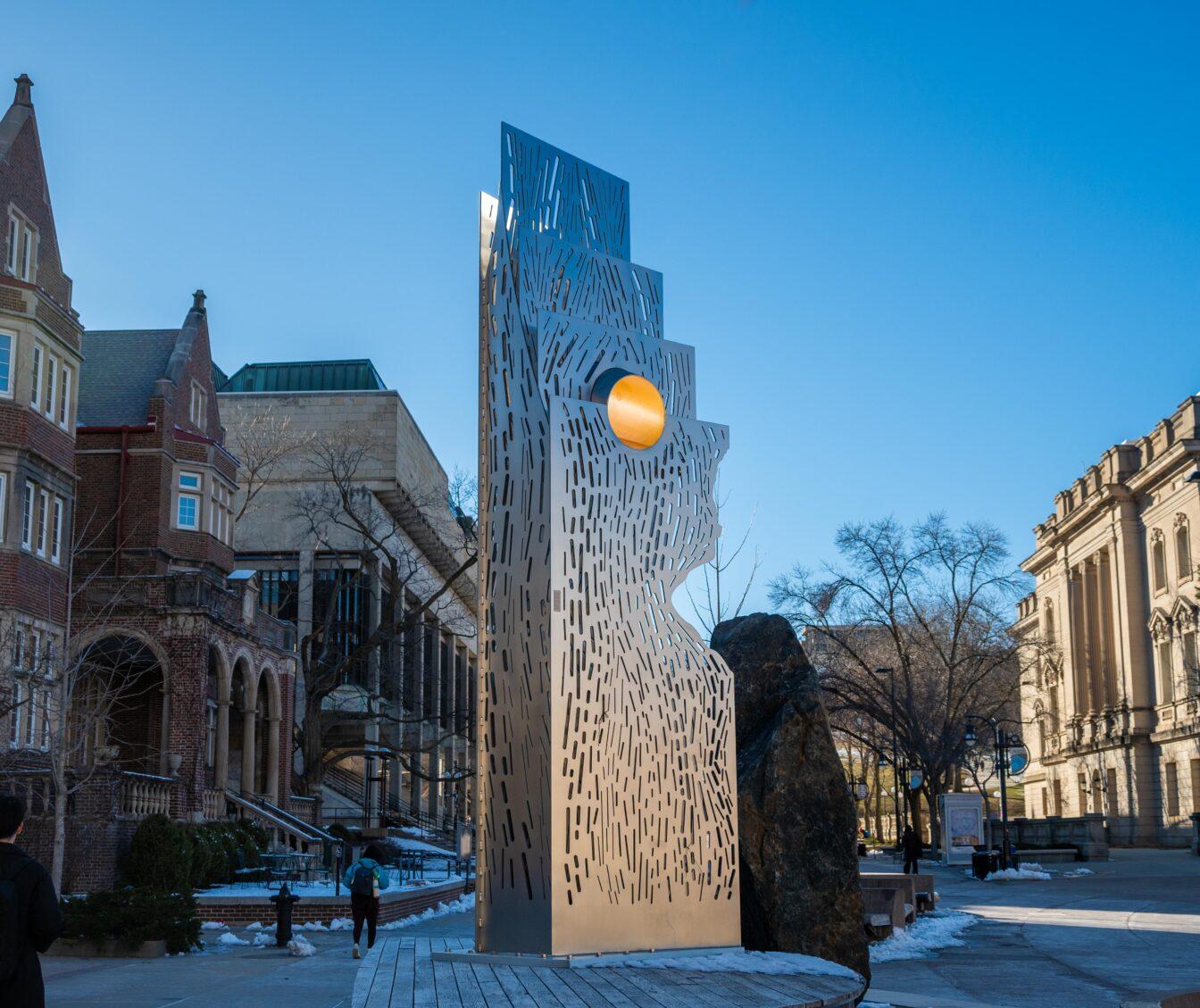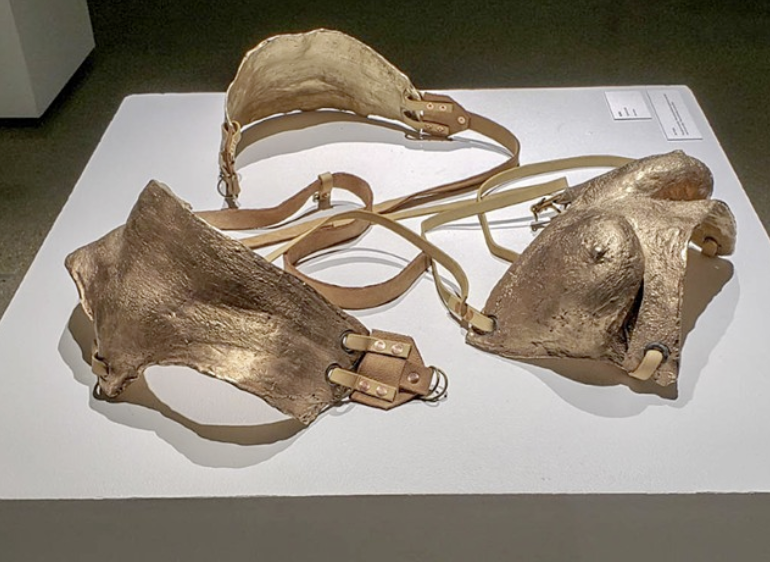Third-year Master of Fine Arts student Alex Orellana recently debuted their photography exhibit “Middle Child: Photographs by Alex Orellana” at the Chazen Museum of Art.
The exhibit details life as an androgynous individual and differences in treatment based on gender presentation.
The Badger Herald spoke with Orellana about their life experiences that guided this exhibit and their inspirations as an artist.
This interview was edited for style and clarity.
The Badger Herald: What is it about photography that you like most and why did you choose to use it for this exhibit?
Alex Orellana: I’ve been a photographer since I was little, and I’ve been working at it a long time. With this project, it made sense to me because it started as basically me taking selfies. I’m taking hormones and they’re changing the way that I look, and I think it’s pretty natural to want to document that process — to see the before and after. That turned into work I was sharing because I wasn’t seeing representation of people like me in the world.
So basically, the aesthetic of the image of the series is rather based on a mugshot kind of photograph — you take your ID out of your wallet, and that’s basically supposed to be a summation of who you are as a person. We attribute a lot of meaning and a lot of aspects of someone’s identity to that single section of their body. So, I wanted to do the very standardized portrait type with basically me as these different genders as the starting point.
BH: In curating this entire exhibit, what was that process like from initially taking the photo to mounting it on the wall? How has that process been for you?
AO: First, I was taking images for private reasons, and then it moved into me taking more constructive, stylized artistic portraits of myself as different genders to prove that I can exist as more than one. So, I’m trying to point out they are arbitrary, or at least the physical manifestations we attribute so much meaning to with the way that people look. It’s all arbitrary.
Then from there, I started to look at the tracks of these studies and the psychology department. Unlike a lot of artists, I have a really deep love for science. I spent my first year at the University of Wisconsin, in addition to the art department, working at a vision lab in the psychology department. I was being exposed to a lot of research studies — a lot of different methods of looking at the way people see and the way we perceive.
They were using software built for this study that could physically calculate the differences between peoples’ faces. I photographed my entire family — my mom, dad, brother, sister and myself, all in the same standard “identity portrait,” [used for] drivers license, mugshot framing. Using this software, you can calculate the difference between those points on each person.
It’s not just blending our color and our texture, it’s calculating the different shapes that would exist to get from my face to my mom’s face, or my face to my brother’s face. And I did that for my entire family, and there’s photos and videos of that process in the show.
Conversation Starter: Creative director of Eaux Claires talks festival’s growth
BH: In your bio on the Chazen’s website, I read that you had said you wanted to share the experience of how being androgynous affects your social interactions. Would you be able to expand on that?
AO: The bathroom thing is a big issue, right? That’s kind of the hot button thing people are really fixated on about transgender issues. That does affect me, but it affects me a little bit differently than the transgender people I’ve seen on TV portray it as. I’m not trying to switch. I’m not trying to transition to present myself as a woman. I’m taking medication that makes me physically feel better. It helps with my depression, so that’s my motivation. It’s more of a side effect that I look more feminine, and when I go out in public it manifests itself in these ways that I kind of expected, but kind of catches me off guard.
For example, when I go to the store with my girlfriend, I can walk in wearing all men’s clothes, but people will say, ‘Hi, lady,’ and then what do I do with that? What’s my job in that situation? There’s that social dynamic to it — do I want to try and make sure I’m not upsetting people, but then also people will treat me differently depending on if they think I’m a man or think I’m a woman? It’s such a quick judgement and such an arbitrary thing, but it decides how people are going to treat me from the moment they see me.
BH: How do you feel about sharing this work with the public since it seems to come from such a personal place?
AO: It was a debate early on. I’ve always been a technically driven artist. All of my work has always been about doing something really well rather than doing something that’s expressive and especially creative. I was proud of the work I was doing before but it wasn’t personal, and I think people could tell.
I had that debate — I was thinking if I put together a well-made image with something that happens to be in the news right now, am I ready for that? It came down to a conversation I had with my brother in a coffee shop one day. He’s a doctor doing amazing research, and he’s got big ambitious ideas, and I was telling him I admired that. He said, ‘Well, what do you want to contribute?’ and I’ve decided to kind of wave my privacy if I can give someone a little bit of comfort or identification or different representations of the world, and maybe it’ll be a little less hard for someone like me if it was put out there.
I want people to stop treating me in weird ways depending on what gender they read me as. So, it’s also personal on my side, where I don’t want the bathroom to be centered on my right to use the women’s, because I don’t want to use the women’s. I want to use the men’s room, and I just don’t want to be in danger when I go in there. I haven’t seen that particular point of view addressed.
UW art student connects personal experiences with ancestral background in latest exhibit
BH: When everything is said and done, and the exhibit is over, what do you want people to be thinking or feeling or have learned when they walk away from it?
AO: My hope is that it deconstructs these very solidified understandings of men and women and what our appearance means. It’s about all of the other aspects of us as people, so as you walk into the space, hopefully the experience is that you see all of these different pictures of a man and woman, of masculinity and femininity, and you can leave the space not being sure what gender is anymore and not being sure, or at least so confident, that there are these two groups and everything is readily defined.
I kind of love when people don’t know which one I am and still treat me well. If someone doesn’t know if I’m a man or a woman and they still come up to me and speak to me like I’m an individual who’s worthy of care, attention and respect, then I feel like they get to know me based on my unique qualities rather than all of the assumptions they can make about me if they know I am a man or know I am a woman.



















